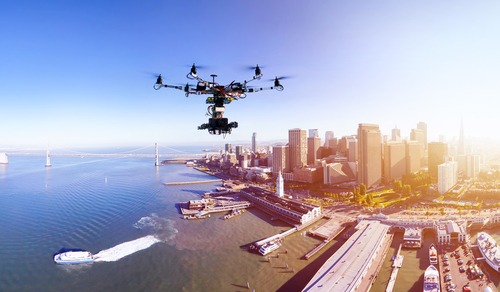
U.S. Sens. Mark Warner (D-VA), John Hoeven (R-ND), Catherine Cortez Masto (D-NV), and Dean Heller (R-NV) recently introduced the Safe DRONE Act of 2017, which seeks to ensure that the United States continues to develop and implement unmanned technology at a steady pace.
The bipartisan bill specifically aims to advance development of unmanned aircraft systems (UAS) and bolster the Federal Aviation Administration’s (FAA) efforts to safely integrate them into the National Airspace System.
When the FAA attempted to institute requirements to streamline an efficient, web-based registration process for UAS owners, the courts found that the FAA did not have the authority to regulate the technology.
“The UAS industry needs legal and regulatory certainty, both to realize the benefits of this technology and to ensure its safe private and commercial use,” Hoeven said. “Our bipartisan bill supports the integration of UAS into the national airspace and helps continue our nation’s leadership in this emerging industry, particularly through the extension of research at the FAA’s national test sites, the development of an unmanned traffic management system and the creation of a UAS training initiative at community colleges.”
The Safe DRONE Act’s provisions include language that helps build a trained and professional workforce in the UAS industry, advancement in UAS traffic management, enhancement of UAS safety and security, and UAS registration authority under the FAA. It also seeks to support emergency operations guidelines as well as coordinate federal UAS spectrum policy.
“This legislation includes several key provisions to further the nation’s global lead in commercial unmanned aircraft systems,” Brian Wynne, president & CEO of the Association for Unmanned Vehicle Systems International, said. “These initiatives will help expand the training, research, and public policy needed to support the thousands of jobs the industry is forecast to create, and integrate the thousands of UAS that are anticipated to be flying in our nation’s airspace during the next several years.”